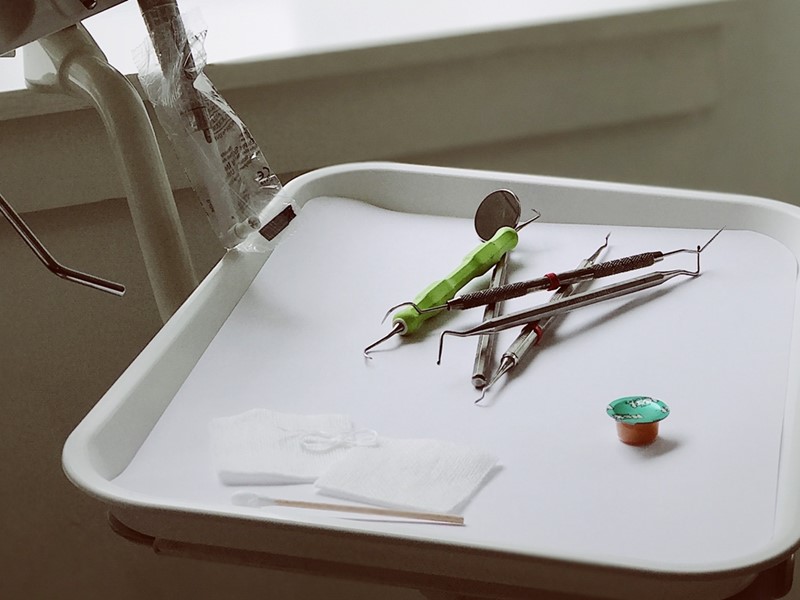Becoming Familiar with Dental Tools

Visiting the dentist can sometimes feel intimidating–whether it’s because you know you haven’t been flossing, or if it’s the shiny, silver tools you know they’ll put in your mouth. These tools are a lot to take in. The sterilized metal seems scary, but if you know what they are for it can help you feel less anxious.
Explorers and Probes
The first tool your dental hygienist is most likely to use is a dental probe, or explorer. These tools have straight or curved ends with little dashes marked into them a millimeter apart. The dashes help the hygienist indicate how far the gums have recessed as they use the probe to look at each tooth, checking for cavities or other problems. The explorers may seem sharp and daunting, but their job is to search for problems in your mouth so they can be fixed and you won’t have to deal with unnecessary pain.
Scalers
When the hygienist inspects your teeth with a probe, they will also scrape away some larger deposits of plaque or even food. But the scaler will do this on an even grander scale. This is one of the more imposing tools because it has a curved end with a sharp point. If you dread the sound of scraping on your teeth, you hate the scaler. You’re not alone.
It’s not a pleasant experience, however, it works to remove hardened plaque that has built up along the gum line. Removing the gunk along your gums is essential for keeping your gums healthy and preventing gingivitis. It’s a difficult place to clean and it’s near impossible to do it without the help of a professional. So, instead of being scared of the noise, be thankful for it.
Suctions/Injector
One of the friendlier-looking tools used by dentists and hygienists is the suction tool. When searching around your mouth for problem areas, these professionals need a dry environment for proper inspection. The suction tool allows them to suck up saliva and water. Sometimes it gets stuck to your tongue or cheek for a slightly more fun experience.
Often paired with each other, the water and air injector do the opposite of the suction. It expels water or small volumes of air into the mouth to rinse away buildup. With all the water in your mouth, you’ll often hear the hygienist ask you to close your mouth while they use the suction to clear away the moisture. These silly tools are ones to appreciate during your visit.
Polisher and Prophy Cup
This is a more familiar-looking tool because it resembles a toothbrush. The polisher and soft prophy cup clean the teeth until they sparkle. After all the plaque removal, the feeling of having your teeth buffed and shined is rewarding…though sometimes the fast whirring of the polisher does tickle.
Mouth Mirror
The stainless steel of the mouth mirror is cold and makes your tongue curious, but it’s helpful for dentists and hygienists to use this tool to inspect hard-to-see areas. Not only that, they can use the mirror to gently push against your tongue or cheek when they are obstructing their line of vision.
Dental Drill
The drill is the most intimidating of dental tools. However, the drill is mostly used when there is a cavity or other type of tooth damage. If you take care of your teeth, you shouldn’t have to experience the drill very often. And, if the drill is required, the dentist will administer a local anesthetic to the area to relieve your pain.
Dental tools can seem scary when they lay on the tray next to you. But our dentists and hygienists are specially trained to use them to lessen your pain and make your mouth cleaner and happier. If you are still nervous about the tools, ask the hygienist to explain their process while they prepare you to see the dentist. Becoming more familiar with the tools during each visit can help you to feel more comfortable during your appointment.
